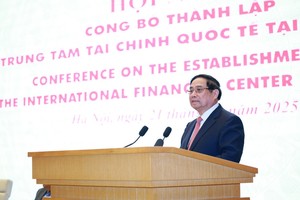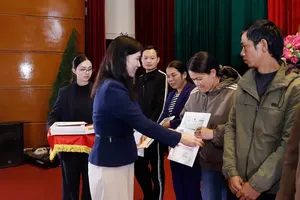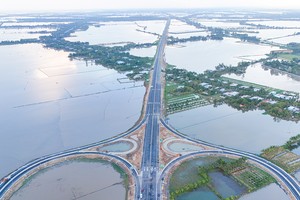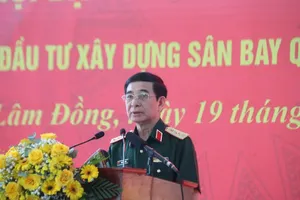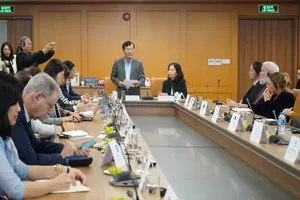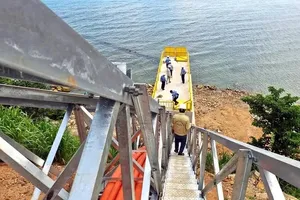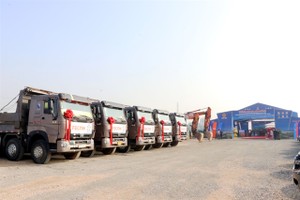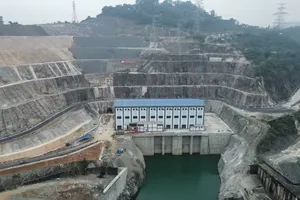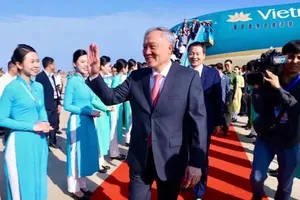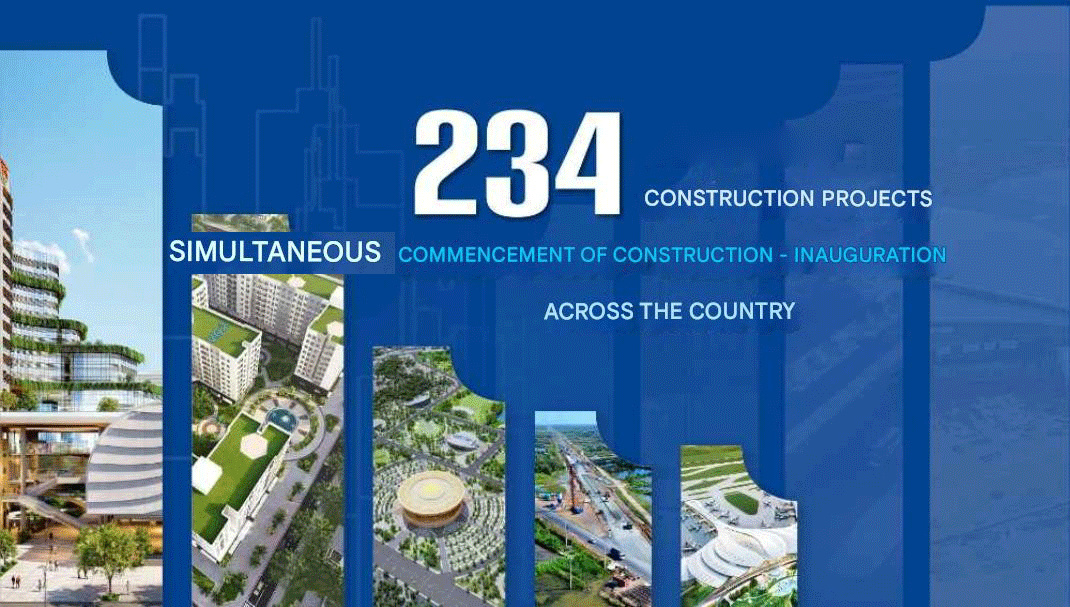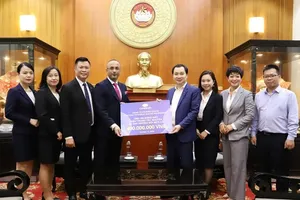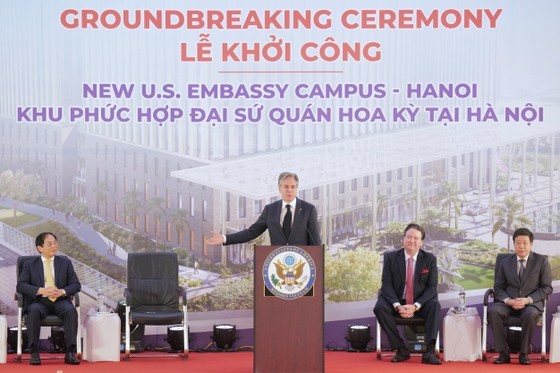 |
US Secretary of State Antony Blinken participates in the groundbreaking ceremony of the new US Embassy Campus in Hanoi on April 15. (Photo: SGGP) |
US Secretary of State Antony J. Blinken, Vietnamese Minister of Foreign Affairs Bui Thanh Son, Deputy Minister of Foreign Affairs Ha Kim Ngoc, and US Ambassador to Vietnam Marc Knapper were among the attendees at the groundbreaking ceremony for the new US Embassy Campus in Cau Giay District on the morning of April 15.
Assistant Secretary of State for East Asia and Pacific Affairs Daniel Kritenbrink, Mr. Knapper's predecessor, and leaders from various departments of both Vietnam and the US Embassy were also in attendance.
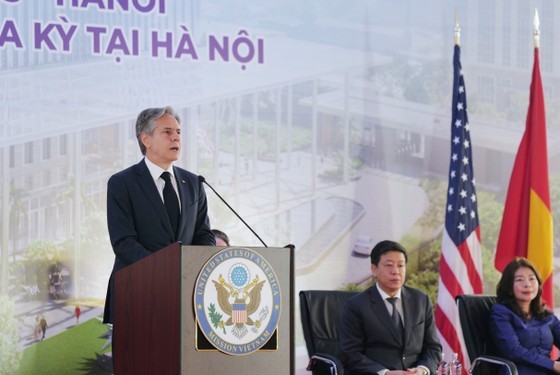 |
US Secretary of State Antony J. Blinken speaks at the event. (Photo: SGGP) |
The new US Embassy Campus is expected to be constructed with a total cost of $1.2 billion, making it one of the most expensive US embassies in the world, according to the US Embassy in Vietnam.
The new embassy Campus features an elevated gallery and an outdoor terrace with stunning views of the nearby park, serving as the venue for various events. The building design is inspired by the natural beauty of Ha Long Bay.
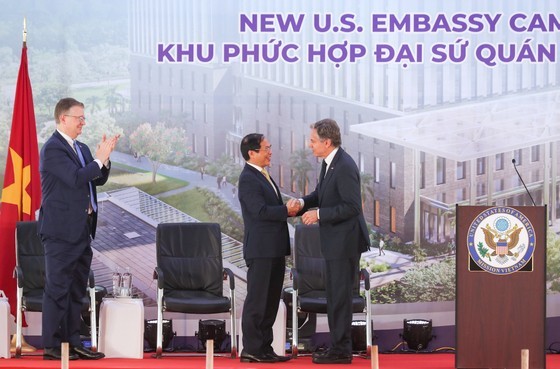 |
Minister of Foreign Affairs Bui Thanh Son and Foreign Minister Antony Blinken at the groundbreaking ceremony of the US Embassy Campus. (Photo: SGGP) |
In addition, visitors to the Campus will be able to admire a lotus pond, which is a nod to the national flower of Vietnam. The lotus is known for symbolizing nobility, commitment, and a positive outlook toward the future.
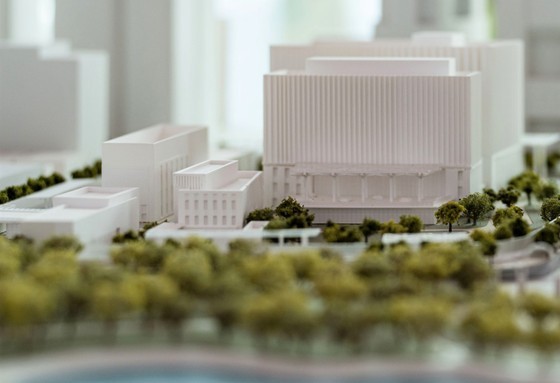 |
Perspective of the US Embassy Campus in Hanoi. (Photo: SGGP) |
During the groundbreaking ceremony, US Secretary of State Antony Blinken emphasized that this event was the result of years of preparation and the dedication and creativity of many diplomats from both the US and Vietnam.
He also shared that he had personally witnessed this dedication when he visited Hanoi a few years ago as the US Deputy Secretary of State. At that time, the two countries were working together to find land for the new Campus.
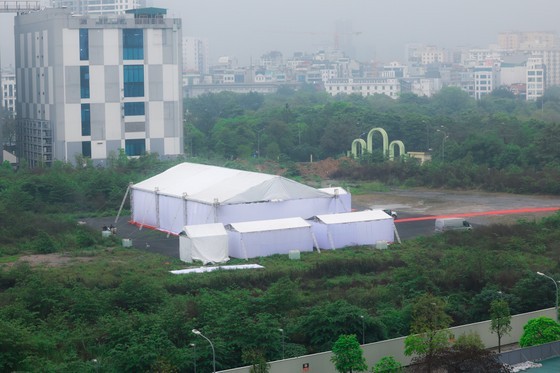 |
Construction site of the US Embassy Campus. (Photo: SGGP) |
Mr. Blinken emphasized that the groundbreaking ceremony and the new embassy they will build represent a significant step forward in strengthening the important partnership between the US and Vietnam.
The land leased by the US Embassy to build the new headquarters has four facades located in Cau Giay District. One side is adjacent to Pham Van Bach Street, across from the Central Institute of Hematology and Blood Transfusion and the Supreme People's Procuracy. The other side is adjacent to Cau Giay Park, separated by Truong Cong Giai Street. The other two sides have wide asphalt roads and tree-lined sidewalks.
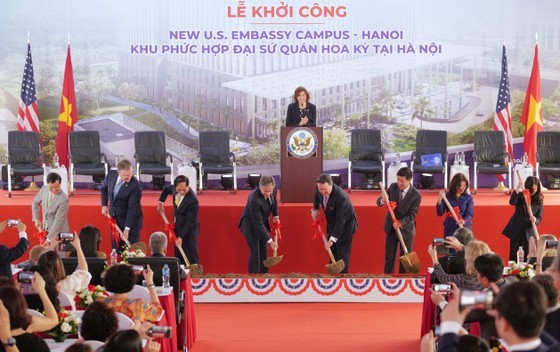 |
Foreign Minister Bui Thanh Son, US Secretary of State Antony Blinken, and delegates perform the groundbreaking ceremony of the new US Embassy Campus in Hanoi on the morning of April 15. (Photo: SGGP) |
In August 2022, the Hanoi People's Committee signed a land lease agreement with the US Embassy to construct a new headquarters in the Cau Giay District during the visit of US Vice President Kamala Harris to Vietnam.
The US Embassy in Vietnam's new headquarters will cover an area of 3.2 hectares and is seen as a symbol of the strong relationship between Vietnam and the US. The Embassy Campus will have eight floors and is estimated to cost $1.2 billion. Vietnam has agreed to lease the land to the US for a period of 99 years.
The design of the Embassy Campus was inspired by the natural beauty of Vietnam's Ha Long Bay, the Red River Delta, and the Mekong Delta. The project includes several buildings, such as the main working building, staff quarters, ancillary dwellings, and garages.
During the groundbreaking ceremony, US Secretary of State Antony Blinken highlighted the importance of this project, stating that it will quadruple the number of consular check-in counters and enable the embassy to issue visas and passports to more people at a faster pace. The construction of the project is estimated to take six years and will provide quality jobs for approximately 1,800 local workers. It is also expected to contribute an additional $350 million to the Vietnamese economy.
On the evening of April 14, US Secretary of State Antony Blinken arrived at Noi Bai airport, starting his visit to Vietnam from April 14 to 16, at the invitation of Foreign Minister Bui Thanh Son.
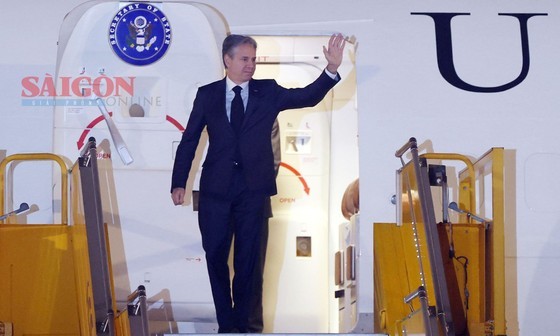 |
US Secretary of State Antony Blinken's plane landed at Noi Bai International Airport at 7:50 p.m., approximately an hour behind schedule.
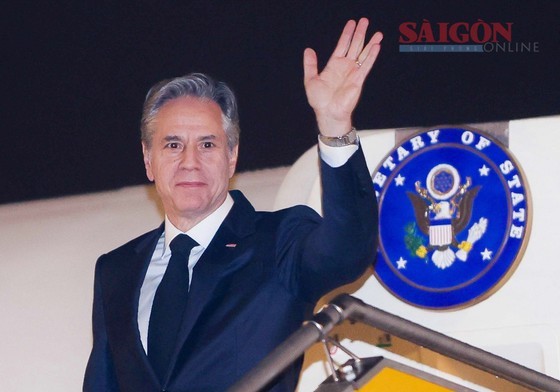 |
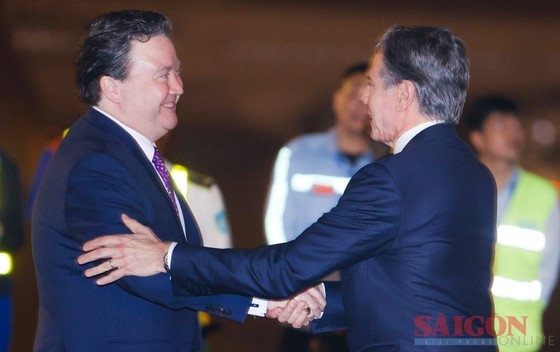 |
US Secretary of State Antony Blinken's plane landed at Noi Bai International Airport at 7:50 p.m., approximately an hour behind schedule. (Photo/Video: SGGP)
US Secretary of State Antony Blinken has traveled to Vietnam to engage in significant discussions with Vietnamese partners, particularly as the two countries celebrate the 10th anniversary of their comprehensive partnership.
During his visit, the US Secretary of State is scheduled to meet with senior leaders of the Party and the State of Vietnam to discuss a common vision for a connected, prosperous, peaceful, and resilient Indo-Pacific region.
 |
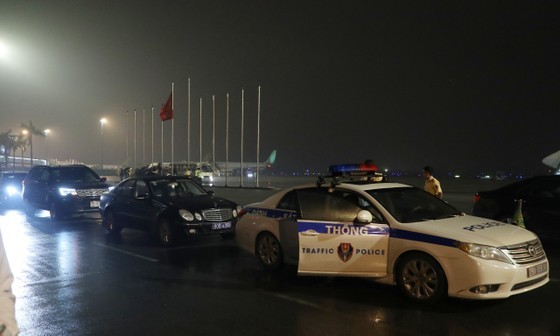 |
| Priority convoy waiting at the parking lot next to VIP A lobby, Noi Bai International Airport. (Photo: SGGP) |
Furthermore, he plans to meet with the teaching staff, students, and scientists of Hanoi University of Science and Technology.
As part of his visit, Mr. Blinken will tour some of the university's research facilities in the fields of artificial intelligence (AI), robotics, and air purifiers, while also discussing the possibility of cooperation between Hanoi University of Science and Technology and the US Embassy to promote research and development, innovation, and science education.
 |
US Ambassador to Vietnam Marc E. Knapper discusses with Mr. Le Chi Dung, Head of the Americas Department of the Vietnamese Ministry of Foreign Affairs, at VIP A lobby before the welcome ceremony. (Photo: SGGP) |
He will also observe the robot competition of Vietnamese students who are preparing for the upcoming VEX World Championship in Dallas, Texas.
This event highlights the US's support for Vietnam in the field of STEAM, which is critical to the country's ongoing economic development, regional prosperity, and the cultivation of a new generation of scientists.

